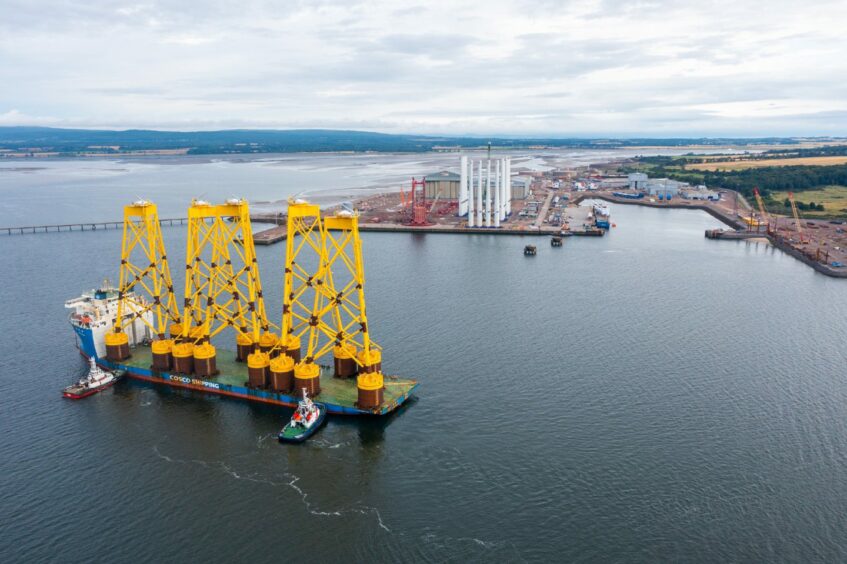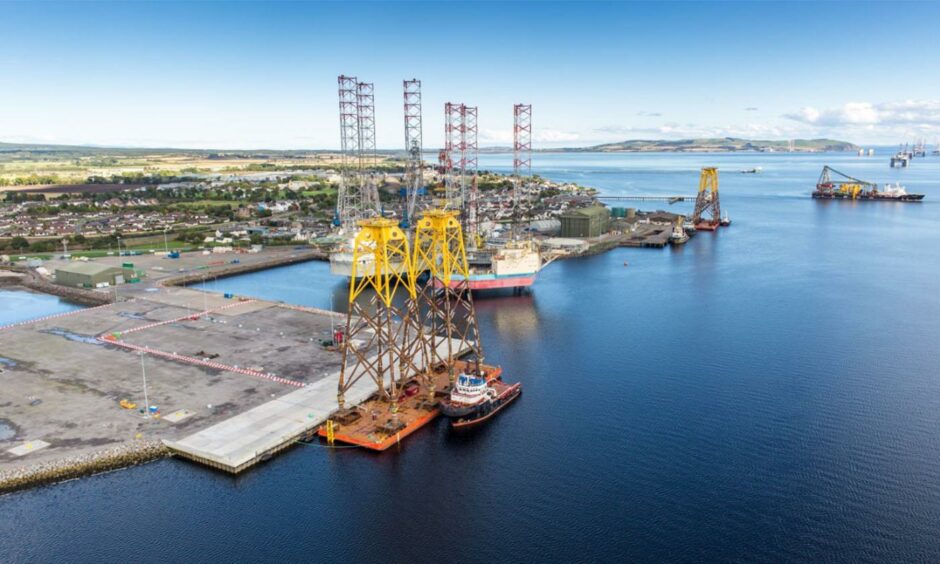
Tenders for Scotland’s two green freeports could be awarded as early as July.
Inverness-based Global Energy Group (GEG) and Port of Cromarty Firth (PoCF), partners in bidding consortium Opportunity Cromarty Firth (OCF) are looking to secure £25 million of UK Government funding.
The OCF consortium was launched two years ago, with the aim of creating a free trade zone – centred on the Cromarty Firth – to help secure energy projects, as well as support and create jobs in the Highlands benefiting from tax relief and other incentives.
The ambitious bid is backed by PoCF, Port of Nigg owner GEG , the Port of Inverness and more than a dozen regional businesses, along with public sector organisations and academic bodies.
The question on everyone’s lips in the Highlands is how many jobs?
With gigantic projects such as ScotWind not likely to materialise until the late 2020s, the thousands of new posts some have mentioned will probably not happen for a few years yet.
Scale of developments needs more money
“Nigg and the wider Cromarty Firth in aggregate have already had £165m overall investment made in them,” GEG operations director Steve Chisholm told The Press and Journal.
He added: “We have delivered 2.8 gigawatts of wind, mostly offshore, but some onshore.
“We have also delivered six megawatts of tidal energy and numerous prototypes for wave energy, so it is oven ready. If it has already had that money spent on it, why does it need more?
“The reality is the scale of developments governments are looking for in terms of renewable energy are such they require much larger facilities than we currently have, so considerably more investment is needed.”
Mr Chisholm continued: “We are not starting off from a walking pace, we are hitting the ground running. We have proved to developers, governments and industry bodies we can deliver.
“What we want to create are long-term sustainable, well-paid jobs..
“It is our families, our children, grandchildren we are looking to provide for.
Cromarty Firth ‘most suitable location’ for floating wind cluster
“Freeports – because of legitimate tax advantage – allow for inward investments to make a more compelling business case. There is almost £1 billion of spend per gigawatt. That is going to create more jobs.”
Mr Chisholm said there could be “multiple factories” attracted into the area, while hydrogen developments were also likely to bring “potentially thousands of new jobs” – as would clusters of small businesses such as hotels, restaurants and shops.
The Cromarty Firth, on the east coast of the Highlands, was last year identified as the “most suitable location for a Scottish floating wind cluster” in a strategic investment assessment published by the Scottish Offshore Wind Energy Council.
In addition to offshore energy production, members of the OCF consortium, such as Port of Inverness, play roles in supporting development of other forms of renewables, including pumped storage hydro power and onshore wind.
“It is the three ports that are driving the whole bid forward,” said Port of Inverness chief executive Sinclair Browne. “Our role is complementary. There are some large schemes planned in the south of Inverness in terms of pump storage – it is renewable energy at the hub of the climate emergency.
“Job creation is at the heart of the freeport [bid]. If you look at what the bidding document says, one of the things is promoting regeneration and high-quality job creation. Certainly, that is at the core of the overall bid.
“It is huge capacity to increase decarbonisation – we have got a natural resource we should tapping into – and jobs creation for Scotland.”
Energy security
Energy security has shot to the top of Westminster’s in-tray following the Russian invasion of Ukraine and a subsequent spike in fuel prices.
PoCF strategic business development manager Joanne Allday said: “Everything in our bid is about clean energy and accelerating the change to renewable and security, which has become much more important in recent weeks.
“The supply chain locally has 40 years of experience in oil, gas and renewables.
“We are the leading location in Europe for drilling rigs which come into the firth for inspection, repair and maintenance. We obviously have very sheltered, very deep waters.”
Ms Allday added it was recently confirmed through the English freeport process, local regions would be able to retain business rates above a certain line agreed with the government and that non-domestic rates retention in Scotland would also be available.
“You can imagine for Highland Council how they could reinvest that money,” she said, adding it could be “vastly more” than the £25m seed funding.
“You have also got tens of billions of pounds about to be spent on the ScotWind projects and the majority of these are on our doorstep – it is perfect timing.”
What is a green freeport?
A green freeport is a large zoned area within a defined boundary which includes rail, sea or air links. Operators and businesses in the zone can benefit from a package of tax and other incentives.
The green freeport model in Scotland closely aligns to the offer set out in England, with both having four main objectives:
- Promote regeneration and high-quality job creation.
- Promote decarbonisation and a “just” transition to a net-zero economy.
- Establish hubs for global trade and investment.
- Foster an innovative environment.
Who are green freeport runners and riders in Scotland?
Opportunity Cromarty Firth and Forth Ports, including Rosyth, Leith, Dundee and Grangemouth are bidding. Aberdeen and Peterhead ports are also due to make a joint bid for the special status.
Finance Secretary Kate Forbes said: “The twin objectives of creating high-quality jobs and contributing to decarbonisation of our national economy sit right at the heart of our ambitions for, and expectations of, green freeports.
“While two locations will be designated as green freeports, it will be vital to ensure regional economies and wider national supply chains will also benefit.”
The UK and Scottish governments will be providing a range of tax reliefs and financial support through devolved and reserved mechanisms.
The joint prospectus includes payment of the real living wage.
Recommended for you

 © Supplied by Morrison Media
© Supplied by Morrison Media